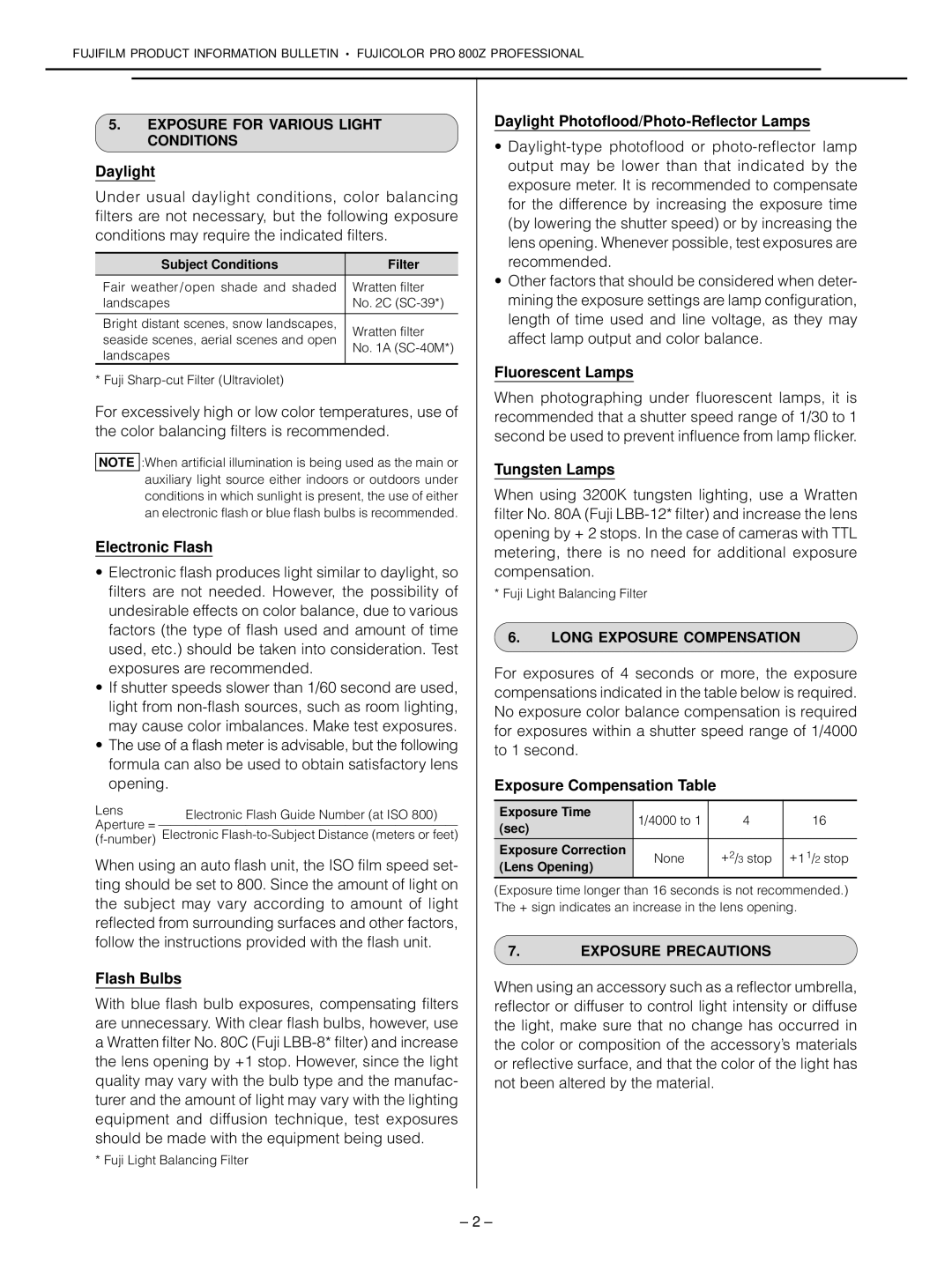AF3-177E specifications
The FujiFilm AF3-177E is a versatile and advanced imaging device designed for a variety of professional applications. This state-of-the-art unit is ideal for those in the fields of document digitization, photography, and video production, delivering exceptional performance and reliability in various environments.One of the main features of the AF3-177E is its high-resolution imaging capabilities. With a maximum resolution that surpasses traditional models, this device ensures that every detail is captured with stunning clarity and accuracy. The 177-megapixel sensor allows for stunning image quality, making it suitable for producing large-format prints as well as high-quality digital archives.
Equipped with advanced autofocus technology, the AF3-177E uses phase detection and contrast detection systems, ensuring sharp images even in fast-moving scenarios or challenging lighting conditions. This capability allows photographers and videographers to focus quickly on their subjects, saving time and enhancing creativity on the go.
The AF3-177E features robust connectivity options, including USB 3.0, HDMI, and Wi-Fi. These connectivity features provide users with the flexibility to transfer files quickly, stream content in real-time, and easily integrate the device into existing workflows. The ability to operate wirelessly simplifies collaboration, allowing multiple users to access and control the camera from remote locations.
Another remarkable characteristic of the FujiFilm AF3-177E is its durability and build quality. Constructed with weather-resistant materials, this imaging system is ready for use in rugged environments and can withstand varying climatic conditions. This makes it an excellent choice for outdoor photography, where reliable performance is crucial.
The device also boasts a user-friendly interface, featuring customizable settings and easy navigation options. Photographers can adjust various parameters, such as exposure compensation, ISO settings, and white balance, allowing for tailored shooting experiences that meet specific project requirements.
In addition, the AF3-177E comes equipped with advanced editing and processing software, ensuring that users have the tools they need to refine and enhance their images right out of the box. This all-in-one solution streamlines the workflow, enabling creators to focus on their craft without unnecessary interruptions.
In summary, the FujiFilm AF3-177E represents a significant advancement in imaging technology, offering a combination of high resolution, advanced autofocus, robust connectivity, and durable design. The thoughtful integration of features makes this device a powerhouse for professionals looking to capture stunning visuals with efficiency and precision.

